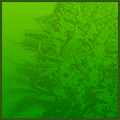|
We Update Daily!
 Custom Search Custom Search
Chris S. Kenoyer. Owner
MMJ Patient, Medical Activist,
Online Patients Advocate,
Online MMJ News Journalist
My Medical Bio
Follow Us Now On Twitter
@MedicalMMJMan
Or Follow Us Now
On Facebook
Email Us Here
olpwebs@yahoo.com
Or Email Us Securely Here
MedicalMMJMan@countermail.com
NEW 100% Encrypted Email Server
OLP’s Free MMJ News EList
Get The Latest In MMJ News
Press Contact Info
Is CBD? A Possible Cure For
Breast Cancer..? And All The Other
Many Forms & Types Of Cancer..?
Learn More About CBD Here
***************************
Advertise Here On OnlinePot
Rates As Low As $50 a Year
24/7 – 365 Days A Year Of Sales!
***********************************
Website Navigational Links
Main Start Page 2
**************************
Latest Marijuana News Reports
*********************************
Parody’s Cartoons US
Government Grown Pot,
Term Papers, School
Reports, & Thesis’s On
Marijuana & Cannabis
*********************************
Amsterdam A to Z
********************************
Canadian Marijuana Websites
*******************************
Church’s & Pot Cannabis
*****************************
Co-Ops, Clinics, Dispensary’s
*****************************
Marijuana Doctors & Clinics
****************************
Pot Cooking Recipes
****************************
Drug Testing A To Z
***************************
Pot Games
****************************
Pot Songs Video’s
****************************
100’s Of Grow Guides
***************************
Hash A- Z
***************************
Cannabis Legal Info, Drug
Lawyers, State, Federal Laws,
State & Supreme Court Rulings
**********************
POW’s Of The MMJ War!
*****************************
Other Marijuana Websites
Reciprocal Link Exchange
****************************
Medical Marijuana Studies,
Research Report’s, Medical
Cannabis Clinic Study’s
****************************
Parody’s & Cartoons
When We All Need A Good Laugh!
****************************
Avoiding Online MOM Scammers
Newly Re-Updated Info!
*****************************
The Politics Of Contraband
Medical Marijuana In The Mail?
******************************
The Hall Of Shame Section
The Online MOM Scammers
*****************************
Online MOM Providers Ads
****************************
Politicians & Voters Rights
****************************
Medical Marijuana, Strains
****************************
The OG Marijuana Strain Guide
****************************
800+ FAQ Growing Questions
****************************
Patients Spiritual Guidance,
Free Online Crisis Help Center
****************************
Online Marijuana Seed Banks
****************************
Maximum Security Section
Just Updated!
*****************************
Traveling Tips, Guides, B & B’s
****************************
Vaporizers A To Z
*****************************
Online Pot Video’s & Movies
**********************************************
Please Visit Both Of Our Sister Websites!
Maine Patients Coalition.org
The Reefer Madness Teaching Museum.org
Listen Right Here Online!
To Original 1930-1950’s
Reefer Madness Propaganda
Radio Shows And Programs
Before TV There Were
"Radio Stars"



*********************************
Legal Disclaimer
Guest Book
Translate Text or Web Page Go To:
Language Tools Google Translations
Article Submissions & News
Reports Are Always Gladly
Accepted Here.

No part of this site maybe used or
reproduced in whole or in part
without the written consent of the
Copyright Owner
www.onlinepot.org
OLP ENTERPRISES L3C
1999-2014 Copyright
© All rights reserved
OnlinePot assumes no legal liability for any products, or information or
news posted, services offered, Or
any contests or give away’s offered.
|
|
MARIJUANA OPTICS An elaboration on the phytochemical process that makes THC
A Continuing updating manual
April 2006 Update Of
by Joe Knuc
The resin exuded by the glandular trichrome forms a sphere(1) that encases the head cells.(2)
When the resin spheres are separated from the dried plant material by electrostatic(3) attraction and placed on a microscope slide illuminated with a 100W incandescent bulb, they appear very dark when observed through a 300X microscope. Since orange, red, and infrared are the component wavelengths of incandescent light, and since the absorption of light makes an object dark or opaque to the frequency of the incoming wave, one can conclude that these wavelengths are probably not directly involved in energizing the cannabinoid pathway.(4)
However, the resin sphere is transparent to ultraviolet radiation.(5)
The author found through trial and error that only one glandular
trichome(6) exhibits the phytochemical process that will produce the amount of THC associated with pain relief, appetite stimulation and anti-nausea; euphoria and hallucinations are side-effects, however. This trichome is triggered into growth by either of the two ways that the floral bract is turned into fruit.(7)
Of all the ways that optics are involved in the phytochemical production of THC, the most interesting has to be how the head cells and cannabinoid molecules are tremendously magnified(8) by the resin sphere. These and other facts are curiously absent from the literature. The footnotes update the literature to include electrostatic separation of the resin sphere from the dried plant material and marijuana parthenocarpy.
(1) "For all spheres, a ray drawn perpendicular to the sphere’s surface will intersect the center of the sphere, no matter what spot on the surface is picked, and the magnifying power(a) of a glass sphere is greater the smaller its size. A sphere of glass can also bring light that is heading to a focus behind it to a point within it, with freedom from two aberrations, spherial aberration and coma, but not from chromatic aberration. Chromatic aberration results when different wavelengths are focused on different planes and is the most difficult of the aberrations to correct. The human eye lens also exhibits chromatic aberration, but a yellow pigment(b) called the macula lutea in the fovea, an area at the rear of the eyeball, corrects this problem by the way it absorbs blue light."
(a)"The formula to calculate the magnifying power of a sphere is l=333/d, where l is the magnifying power and d is the diameter of the sphere expressed in mm."
(b)Interestingly, the resin exuded by drug-type flowering female marijuana plants has a yellow tint. Could this pigment work to correct chromatic aberration in the resin sphere like the macula lutea does in the fovea for the eyeball?
RETURN
(2) Quoting from the Mahlberg and Kim study of hemp(a) "THC accumulated in abundance in the secretory cavity where it was associated with the following: cell walls, surface feature of secretory vesicles, fibrillar material released from disc cell wall, and cuticle. It was not associated with the content of the secretory vesicles."
The resin spheres contain the THC. It is not contained in the leaf or floral bract. After the resin spheres are dissolved in solvent or dislodged by electrostatic attraction, and a microscopic examination of the leaf or floral bract has revealed that only the glandular trichomes’ stalks remain, no effect will be felt after smoking the dried plant material from which the resin spheres have been removed.
RETURN
(3) The electrostatic collection of the resin spheres from dried marijuana plants with plenty of ripe seeds has been for hundreds of years the method indigenous people of North Africa and Lebanon have used to make hashish. Obtain a round metal can 8" or so in diameter x 3" or so in depth (the kind that cookies come in) with a smooth lid. Obtain 2 ounces of dried marijuana with plenty of ripe seeds in the tops. To remove the seeds and stems, sift the marijuana tops through a 10-hole-to-the-inch wire kitchen strainer into the can. Close the can with the lid and vigorously shake the closed can three or four times. This gives the resin spheres an excess negative charge. Let the can sit for a moment and then remove the lid. Opposites attract. The negative-charged resin spheres have been attracted to the metal surface of the can and lid which has a positive charge. Take a matchbook cover or credit card and draw the edge across the surface of the lid. Note the collected powder. Observed under 300X magnification, the collected powder from this "shake" is composed of resin spheres with an occasional non-glandular trichome. As the marijuana is shaken again and again, and more of the yellow resin spheres are removed from the plant material, the collected powder gradually becomes green-colored as the number of non-glandular trichomes increases in the collected powder. The greener the powder, the less the effect.
RETURN
(4) "Cannabinoids represent a dimer consisting of a terpene and a phenol component. Cannabigerol (CBG) is the first component of the pathway. It undergoes chemical change to form either cannabichromene (CBC), or cannabidiol (CBD). Delta 9-tetrahydrocannabinol (THC) is derived from CBD."
RETURN
(5) "Pate (1983) indicated that in areas of high ultraviolet radiation exposure, the UVB (280-320 nm) absorption properties of THC may have conferred an evolutionary advantage to Cannabis capable of greater production of this compound from biogenetic precursor CBD. The extent to which this production is also influenced by environmental UVB has also been experimentally determined by Lydon et al. (1987)."
The author’s own experience allow for a more specific conclusion: If the UVB photon is missing from the light stream(a), or the intensity as expressed in µW/cm2 falls below a certain level(b), the phytochemical process will not be completely energized with only UVA photons which are more penetrating but less energetic, and the harvested resin spheres will have mostly precursor compounds and not fully realized THC(c).
(a)Examples of an environment where the UVB photon would be missing from the light stream include all indoor cultivation illuminated by mercury or sodium lamps and in glass, polyethylene or fiberglass covered greenhouses.
(b)"The maximum UVB irradiance near the equator (solar elevation angle less than 25 deg.) under clear, sunny skies is about 250 µW/cm2. It was observed that the daily solar UVB in Riyadh, Saudi Arabia (N24.4Lat.) decreased from September to December by about 40% (Hannan et al. 1984)." The further a person is from the tropics, the less UVB radiation there is: the average annual exposure of a person living in Hawaii is approximately four times that of someone living in northern Europe. "Some reptiles, mainly lizards, turtles, tortoises and crocodilians, require UVB to make vitamin D3. Green Iguanas will start to show signs of metabolic bone disease at 6 months of age if not exposed to UVB wavelengths. A rubber jaw, shaking and non-use of hind legs are all signs of metabolic bone disease. Metabolic bone disease is perhaps the most common nutritional deficiency affecting captive reptiles. UVA and UVB wavelengths help to prevent or reverse this disease which is commonly seen in young captive lizards; these wavelengths also help to increase appetite and activity in lizards and turtles who require more UVA and UVB than pythons and snakes to induce reproductive behavior. Even though snakes get their vitamin D3 from the livers of the animals they eat (mice, rats, etc.), snakes and amphibians benefit from the UVA wavelength." Below are some UVB readings taken in Hoyleton, Illinois, on a clear sunny day in June by David Krughoff as reported in Reptile Lighting 2000.
7am: 12 microwatts/cm2
8am: 74 microwatts/cm2
9am: 142 microwatts/cm2
10am: 192 microwatts/cm2
11am: 233 microwatts/cm2
12pm: 256 microwatts/cm2
1pm: 269 microwatts/cm2
2pm: 262 microwatts/cm2
3pm: 239 microwatts/cm2
4pm: 187 microwatts/cm2
5pm: 131 microwatts/cm2
6pm: 61 microwatts/cm2
(c)Cannabinoid pathway: Anywhere in this pathway UVB does a better job than UVA in energizing a phytochemical reaction that will produce more fully realized THC because "all cannabinolic compounds show an absorption maximum between 270 and 280 nm in the ultraviolet region."
RETURN
(6) Capitate-stalked glandular trichome.
RETURN
(7) #1: The ovum has been fertilized and there is a seed developing: In the areas of the Northern Hemisphere where indigenous people have grown heterozygous drug-type marijuana for hundreds of years, pollination is used to trigger the growth of the capitate-stalked glandular trichome on the floral bract and concomitant leaves of the flowering females before the autumnal equinox(a) so the majority of seeds will be ripe(b) by mid-October.
(7) #2: The floral bract has become parthenocarpic: Parthenocarpic fruits develop without fertilization and have no seeds. Except for transmutation and turning lead into gold, there has been more nonsense written about seedless marijuana than on any other subject. In marijuana parthenocarpy, the floral bract (the fruit) enlarges in size as though there were a seed growing inside, and the capitate-stalked glandular trichome is triggered into growth on the floral bract and concomitant leaves. "Most popular supermarket tomatoes are parthenocarpic which was induced artificially by the application of dilute hormone sprays (such as auxins) to the flowers." In a trial, marijuana parthenocarpy was not induced by the application of the spray used on tomatoes.
Only the photoperiod(c) will trigger parthenocarpy in flowering female marijuana plants. Marijuana parthenocarpy occurring before the autumnal equinox is considered by the author to be "long-day" and marijuana parthenocarpy occurring after the autumnal equinox to be "short-day". The longest photoperiod that will trigger parthenocarpy in unfertilized flowering homozygous(d) Indica female marijuana plants is 13:00 hours, give or take 15 minutes. This effect can be obtained in the month of August at N35Lat, and because the capitate-stalked glandular trichomes received plenty of UVB during this month at this latitude, the harvested resin spheres had fully realized THC. Rating: euphoria and hallucinations, major appetite boost and pain relief, deep dreamless sleep. These plants seldom grow taller than four feet but potency makes up for the reduced harvest.
The gene pool is heterozygous if a flowering female marijuana plant is not parthenocarpic by the end of the first week in September in the Northern Hemisphere. If this is the case, pollination is used instead of parthenocarpy to trigger the growth of the capitate-stalked glandular trichome before the autumnal equinox to obtain as much fully realized THC as possible in the harvested resin spheres by the time the majority of the seeds are ripe.
The longest photoperiod that will trigger parthenocarpy in unfertilized flowering heterozygous female marijuana plants is 11:00 hours, give or take 15 minutes: This effect can be obtained in the month of November at N35Lat. Because of the low intensity of UVB radiation at this latitude at sea level during November, the harvested resin spheres evidenced only slightly more THC than precursor compounds. Rating: mild to medium euphoria, appetite boost and pain relief, good snooze.
Thai marijuana falls into this 11:00 hour category, and its parthenocarpy is characterized by an inflorescence in which many floral bracts are attached to an elongated meristem. It is these elongated meristems that are harvested to become a THAI STICK. On the other side of the world, Mexican marijuana grown around the same latitudes (Michoacan, Guerrero, Oaxaca) also falls into this short-day parthenocarpic category and the unfertilized marijuana will become "sensimilla" in the 11:00 hour photoperiod which begins in mid-December in that region. The winter sunshine in those latitudes has enough UVB intensity to produce fully realized THC–unlike the winter sunshine at N35Lat.
All unfertilized flowering female marijuana plants will become parthenocarpic in a 9:00 hour photoperiod (15:00 hour dark period): This can be obtained in the month of December at N35Lat. At this latitude in this month there is not even enough UVB in sunlight for precursor vitamin D3 to develop in human skin. The phytochemical process will not produce fully realized THC when UVB falls below a certain level of intensity expressed in µW/cm2. Rating: no effect.
(a)In the Northern Hemisphere above the Tropic of Cancer, the key to all marijuana potency is this: The more days of sunlight the capitate-stalked glandular trichomes’ resin spheres accumulate before the autumnal equinox the more fully realized THC.
(b)It is recognized in the indigenous world that drug-type marijuana with a majority of ripe seeds will produce more euphoria, hallucinations, appetite stimulation, pain relief, and sleep aid than with a majority of unripe seeds.
(c)The photoperiodic response is controlled by phytochrome. "Phytochrome is a blue pigment in the leaves and seeds of plants and is found in 2 forms. One form is a blue form(Pfr), which absorbs red light, and the other is a blue-green form(Pr) that absorbs far-red light. Solar energy has 10X more red (660nm) than far-red (730nm) light causing the accumulation of Pfr." The first and last hour of a day’s sunlight is mostly red light because of the scattering effect on blue light. "So at the onset of the dark period much of the phytochrome is in the Pfr form. However, Pfr is unstable and returns to phytochrome Pr in the dark." The red light in sunrise returns the Pr to the Pfr form. "Phytochrome Pfr is the active form and controls flowering and germination. It inhibits flowering of short-day plants (the long night period is required for the conversion of Pfr to Pr) and promotes flowering of long day plants."
Kelvin Temperature is an easy key to the efficiency of artificial light to fuel photosynthesis or to affect the phytochrome. The former is fueled very efficiently by 6500K light: this is a Kelvin Temperature the same color as the sky at noon on a clear summer day. Some Mercury Vapor HID bulbs are rated 6500K. Metal Halide HID bulbs are rated 4000K and can be used instead of the mercury vapor with good results. A less expensive alternative to HID lights that will produce the same results on a smaller scale is the GE Daylight ULTRA 40-watt 48" fluorescent tube which is rated 6500K. 160W will deliver the desired effect to eight sq ft (2’x4′) if the ballast in the two-lamp holder is a "high power factor" standard size; the smaller, energy-saver ballast provides less luminosity. The fluorescent tubes have to be closer to the plant meristem than the HID bulb. To obtain the desired effect with the fluorescent tubes in an environment that receives no supplemental sunlight, the distance to the plant meristem should not be greater than 2" for seedlings or 6" for transplants in one gallon and larger containers.
Phytochrome, on the other hand, is very responsive to red and orange wavelengths. Because its light is saturated in these wavelengths, the ordinary household incandescent light bulb (2845K) is used as a cheap and effective way either to delay flowering in short-day plants with night-interruption lighting or to establish an artificial light "flowering photoperiod" using 2845K light of appropriate wattage for the square footage at the start and end of the photoperiod to simulate the red wavelength in sunrise and sunset. A 100W light bulb distanced 2′ to 4′ from the plants will deliver the desired effect to 16 sq ft (4’x4′).

As an example: 8′ x 8′ garden plot divided into quads. The phytochrome of the plants is manipulated by 100 watts of 2845K light dangling over the center of each quad for a total of 400 watts. Photosynthesis for the entire garden plot is fueled by 1000 watts of 6500K Mercury Vapor light or 1000 watts of 4000K Metal Halide light dangling overhead at the center of the garden plot. To use the potent UVB photons in outdoor sunlight during July and August to fuel the phytochemical process that makes THC, a short-day flowering photoperiod for the indoor garden plot could be established on May 1st for potted marijuana plants that were germinated December 1st of the previous year.
FLOWERING PHOTOPERIOD
SUNRISE: One hour phytochrome (2845K light)
DAYTIME: 10:00 hours photosynthesis (6500K/4000K light)
SUNSET: One hour phytochrome (2845K light)
NIGHTTIME: 12 hours dark
PARTHENOCARPIC PHOTOPERIOD
SUNRISE: One hour phytochrome (2845K light)
DAYTIME: 9:00 hours photosynthesis (6500K/4000K light)
SUNSET: One hour phytochrome (2845K light)
NIGHTTIME: 13 hours dark
The change to a parthenocarpic photoperiod is made around the third week in June after the plants have fully flowered; then, beginning July 7 or so, the potted plants are moved outdoors into full sun from 9am until 4pm. Moving the plants from the indoor parthenocarpic photoperiod to outdoor sunlight takes advantage of the energy of the UVB photons during these months and should be continued for at least 30 days. This is the time necessary for the phytochemical process to make fully realized THC in the majority of the resin spheres. Manipulation of the photoperiod could be used to good effect in the South of England, for example, because it is only possible to get a sunburn there during July and August. This follows the author’s naked caucasoid sunburn rule that states: If a naked caucasoid can go outside and get a sunburn, there are enough UVB photons of appropriate intensity to make fully realized THC at that time and place.
d)In Nepal and nearby areas of India where the capitate-stalked glandular trichome is triggered into growth by parthenocarpy rather than by fertilized ovum, great care is taken to make sure that all male marijuana plants are destroyed as soon as they reveal their sex. This is because unfertilized Indica flowering females can have both stigma and anther protruding from the floral bract. In the Indica gene pool, female-produced pollen carries an allele for long-day parthenocarpy, and seeds resulting from this female-produced pollen will produce another generation of female plants that will also exhibit long-day parthenocarpy during flowering. But if pollen from male plants is introduced into this gene pool, the resulting seeds will produce a generation of females that will exhibit short-day parthenocarpy instead. The allele for long-day parthenocarpy in the female-produced pollen is carried into the gene pool by self-pollination and cross-pollination, and perhaps homozygous is used too loosely here to describe the genetic result.
RETURN
(8) It appears that the resin sphere acts as a magnifying lens.
A NOTE ABOUT MARIJUANA OPTICS FROM THE AUTHOR: Joe Knuc is a pseudonym. If the paragraph or sentence has quotes around it then somebody with a degree wrote it. Otherwise, the author takes credit for it.
First published December 2002 and revised 2003, the author transferred the MARIJUANA OPTICS copyright in May 2003 to D. Craig Steffens, a medical marijuana patient and activist.
Marijuana Optics is available in two formats: PDF and HTML. But you’ll have to get them from jknuc’s Yahoo Briefcase because this free server does not allow downloads. Send this email message and a link to both file types will be sent to you by return email. The PDF file is compressed into a ZIP file. The HTML file is not.
In California, the San Diego city council recently passed guidelines for the cultivation of medical marijuana inside the city limits. Under these guidelines, only indoor cultivation is permitted. In Humboldt county medical marijuana grown outdoors must be beneath a canopy. These restrictions could be part of a ploy to downgrade the effectiveness of medical marijuana by removing the UVB photon from the light stream. In Canada, for example, the marijuana the government is providing to some patients is grown inside a former copper mine under artificial light. Is it any surprise that the patients’ who signed up for the government program are dissatisfied with the government product and want their money back?
The "hide" is the toughest part of medical marijuana cultivation. How to get the UVB photon to the capitate-stalked glandular trichome without the police or the neighbors seeing the plants is a problem every medical marijuana grower faces if he or she is hip to the cannabinoid pathway. Shelter Systems sells a translucent woven ripstop film that transmits a percentage of the UVB radiation. On September 22 at N35Lat, the UVB reading at 11:00am of unfiltered sunlight was 300 microwatts/cm2 at a 1400′ elevation. At the same time, the UVB reading inside a structure covered with the translucent woven ripstop film was 140 microwatts/cm2. 140 microwatts/cm2 may not seem like much compared to the 300 microwatts/cm2 contained in the unfiltered sunlight, but when you realize that there are zero UVB photons emitted by HID bulbs and zero UVB photons transmitted by corrugated fiberglass or other traditional greenhouse coverings, 140 microwatts/cm2 is quite a lot.
A 2 mil. translucent greenhouse covering manufactured in Japan is transparent to UVB and should last 10 years. An Entrepreneur is needed in the United States to sell this product ONLINE.
RETURN TO THE TOP
© May 2003 D. Craig Steffens
Return Back To Main Medical Reports Page
|
|
|



 Button Ads!
Button Ads! 





